- Home
- Mark R. Levin
Liberty and Tyranny
Liberty and Tyranny Read online
Threshold Editions
A Division of Simon & Schuster, Inc.
1230 Avenue of the Americas
New York, NY 10020
Copyright © 2009 by Mark R. Levin
All rights reserved, including the right to reproduce this book or portions thereof in any form whatsoever.
For information address Threshold Editions Subsidiary Rights Department, 1230 Avenue of the Americas, New York, NY 10020
THRESHOLD EDITIONS and colophon are trademarks of Simon & Schuster, Inc.
The Simon & Schuster Speakers Bureau can bring authors to your live event. For more information or to book an event contact the Simon & Schuster Speakers Bureau at 866-248-3049 or visit our website at www.simonspeakers.com.
ISBN-13: 978-1-4391-6474-7
ISBN-10: 1-4391-6474-6
Visit us on the World Wide Web:
http://www.SimonSays.com
To my family and fellow countrymen
ACKNOWLEDGMENTS
A SPECIAL THANK-YOU TO
my family for their love, support, and forbearance throughout this long process, and who have always encouraged me in everything I do. I want to thank Eric Christensen for his many invaluable contributions throughout this project, and David Limbaugh for his good judgment and wise counsel. Thanks also to my colleagues at Landmark Legal Foundation Richard Hutchison, Michael O’Neill, and Matthew Forys for their excellent insights and research assistance. My editor, Mitchell Ivers of Simon & Schuster, always makes my books better. And to my friends Rush Limbaugh, Sean Hannity, Ed Meese, and Mary Matalin for their constant inspiration and support.
I also want to acknowledge the champions of liberty—the great philosophers, scholars, visionaries, and statesmen—on whose shoulders we all stand; the hero warriors who gave birth to America and continue to protect her; and the American people, who have contributed so much to mankind.
CONTENTS
Acknowledgments
ONE
On Liberty and Tyranny
TWO
On Prudence and Progress
THREE
On Faith and the Founding
FOUR
On the Constitution
FIVE
On Federalism
SIX
On the Free Market
SEVEN
On the Welfare State
EIGHT
On Enviro-Statism
NINE
On Immigration
TEN
On Self-Preservation
EPILOGUE
A Conservative Manifesto
Notes
1
ON LIBERTY AND TYRANNY
THERE IS SIMPLY NO
scientific or mathematical formula that defines conservatism. Moreover, there are competing voices today claiming the mantle of “true conservatism”—including neo-conservatism (emphasis on a robust national security), paleo-conservatism (emphasis on preserving the culture), social conservatism (emphasis on faith and values), and libertarianism (emphasis on individualism), among others. Scores of scholars have written at length about what can be imperfectly characterized as conservative thought. But my purpose is not to give them each exposition, as it cannot be fairly or adequately accomplished here, nor referee among them. Neither will I attempt to give birth to totally new theories. Instead, what follows are my own opinions and conclusions of fundamental truths, based on decades of observation, exploration, and experience, about conservatism and, conversely, nonconservatism—that is, liberty and tyranny in modern America.
To put it succinctly: Conservatism is a way of understanding life, society, and governance. The Founders were heavily influenced by certain philosophers, among them Adam Smith (spontaneous order), Charles Montesquieu (separation of powers), and especially John Locke (natural rights); they were also influenced by their faiths, personal experiences, and knowledge of history (including the rise and fall of the Roman Empire). Edmund Burke, who was both a British statesman and thinker, is often said to be the father of modern conservatism. He was an early defender of the American Revolution and advocate of representative government. He wrote of the interconnection of liberty, free markets, religion, tradition, and authority. The Conservative, like the Founders, is informed by all these great thinkers—and more.
The Declaration of Independence represents the most prominent, official, consensus position of the Founders’ rationale for declaring independence from England. It states, in part,
When in the Course of human events it becomes necessary for one people to dissolve the political bands which have connected them with another and to assume among the powers of the earth, the separate and equal station to which the Laws of Nature and of Nature’s God entitle them, a decent respect to the opinions of mankind requires that they should declare the causes which impel them to the separation. We hold these truths to be self-evident, that all men are created equal, that they are endowed by their Creator with certain unalienable Rights, that among these are Life, Liberty and the pursuit of Happiness….
The Founders believed, and the Conservative agrees, in the dignity of the individual; that we, as human beings, have a right to live, live freely, and pursue that which motivates us not because man or some government says so, but because these are God-given natural rights.
Like the Founders, the Conservative also recognizes in society a harmony of interests,1 as Adam Smith put it, and rules of cooperation that have developed through generations of human experience and collective reasoning that promote the betterment of the individual and society. This is characterized as ordered liberty, the social contract, or the civil society.
What are the conditions of this civil society?
In the civil society, the individual is recognized and accepted as more than an abstract statistic or faceless member of some group; rather, he is a unique, spiritual being with a soul and a conscience. He is free to discover his own potential and pursue his own legitimate interests, tempered, however, by a moral order that has its foundation in faith and guides his life and all human life through the prudent exercise of judgment. As such, the individual in the civil society strives, albeit imperfectly, to be virtuous—that is, restrained, ethical, and honorable. He rejects the relativism that blurs the lines between good and bad, right and wrong, just and unjust, and means and ends.
In the civil society, the individual has a duty to respect the unalienable rights of others and the values, customs, and traditions, tried and tested over time and passed from one generation to the next, that establish society’s cultural identity. He is responsible for attending to his own well-being and that of his family. And he has a duty as a citizen to contribute voluntarily to the welfare of his community through good works.
In the civil society, private property and liberty are inseparable. The individual’s right to live freely and safely and pursue happiness includes the right to acquire and possess property, which represents the fruits of his own intellectual and/or physical labor. As the individual’s time on earth is finite, so, too, is his labor. The illegitimate denial or diminution of his private property enslaves him to another and denies him his liberty.
In the civil society, a rule of law, which is just, known, and predictable, and applied equally albeit imperfectly, provides the governing framework for and restraints on the polity, thereby nurturing the civil society and serving as a check against the arbitrary use and, hence, abuse of power.2
For the Conservative, the civil society has as its highest purpose its preservation and improvement.3
The Modern Liberal believes in the supremacy of the state, thereby rejecting the principles of the Declaration and the order of the civil society, in whole or part. For the Modern Liberal, the individual’s imperfection a
nd personal pursuits impede the objective of a utopian state. In this, Modern Liberalism promotes what French historian Alexis de Tocqueville described as a soft tyranny,4 which becomes increasingly more oppressive, potentially leading to a hard tyranny (some form of totalitarianism). As the word “liberal” is, in its classical meaning, the opposite of authoritarian, it is more accurate, therefore, to characterize the Modern Liberal as a Statist.
The Founders understood that the greatest threat to liberty is an all-powerful central government, where the few dictate to the many. They also knew that the rule of the mob would lead to anarchy and, in the end, despotism. During the Revolutionary War, the states more or less followed the Articles of Confederation, in which most governing authority remained with the states. After the war, as the Founders labored to establish a new nation, the defects with the Articles became increasingly apparent. The central government did not have the ability to fund itself. Moreover, states were issuing their own currency, conducting their own foreign policy, and raising their own armies. Trade disputes among the states and with other countries were hampering commerce and threatening national prosperity.
Eventually the Articles were replaced with the Constitution, which granted the federal government enough authority to cultivate, promote, and “secure the Blessings of Liberty to ourselves and our Posterity,”5 but not enough authority to destroy it all. James Madison, the most influential of the Constitution’s authors, put it best when he wrote in “Federalist 51”:
But what is government itself, but the greatest of all reflections on human nature? If men were angels, no government would be necessary. If angels were to govern men, neither external nor internal controls on government would be necessary. In framing a government which is to be administered by men over men, the great difficulty lies in this: you must first enable the government to control the governed; and in the next place oblige it to control itself.6
For much of American history, the balance between governmental authority and individual liberty was understood and accepted. Federal power was confined to that which was specifically enumerated in the Constitution and no more. And that power was further limited, for it was dispersed among three federal branches—the legislative, executive, and judicial. Beyond that, the power remained with the states and ultimately the people.
The Framers recognized that the Constitution may require adjustments from time to time. Therefore, they provided two methods for proposing amendments, only one of which has been used in adopting all current amendments. It requires a supermajority of two-thirds of the members of both Houses of Congress to propose an amendment to the states for ratification, and three-fourths of the states to successfully ratify the proposed amendment. In all our history the Constitution has been amended only twenty-seven times—the first ten of which, the Bill of Rights, were adopted shortly after the Constitution was ratified. Clearly the Framers did not intend the Constitution to be easily altered. It was to be a lasting contract that could be modified only by the considered judgment of a significant representation of the body politic.
But in the 1930s, during the Great Depression, the Statists successfully launched a counterrevolution that radically and fundamentally altered the nature of American society. President Franklin Roosevelt and an overwhelmingly Democratic Congress, through an array of federal projects, entitlements, taxes, and regulations known as the New Deal, breached the Constitution’s firewalls. At first the Supreme Court fought back, striking down New Deal programs as exceeding the limits of federal constitutional authority, violating state sovereignty, and trampling on private property rights. But rather than seek an expansion of federal power through the amendment process, which would likely have blunted Roosevelt’s ambitions, Roosevelt threatened the very makeup of the Court by proposing to pack it with sympathetic justices who would go along with his counterrevolution. Although Roosevelt’s plan failed, the justices had been effectively intimidated. And new justices, who shared Roosevelt’s statism, began replacing older justices on the Court. It was not long before the Court became little more than a rubber stamp for Roosevelt’s policies.
The federal government began passing laws and creating administrative agencies at a dizzying pace, increasing its control over economic activity and, hence, individual liberty. It used taxation not merely to fund constitutionally legitimate governmental activities, but also to redistribute wealth, finance welfare programs, set prices and production limits, create huge public works programs, and establish pension and unemployment programs. Roosevelt used his new power to expand political alliances and create electoral constituencies—unions, farmers, senior citizens, and ethnic groups. From this era forward, the Democratic Party and the federal government would become inextricably intertwined, and the Democratic Party would become as dependent on federal power for its sustenance as the governmental dependents it would create. Ironically, industrial expansion resulting from World War II eventually ended the Great Depression, not the New Deal. Indeed, the enormous tax and regulatory burden imposed on the private sector by the New Deal prolonged the economic recovery.
The significance of the New Deal is not in any one program, but in its sweeping break from our founding principles and constitutional limitations. Roosevelt himself broke with the two-presidential-term tradition started by George Washington by running for four terms. His legacy includes a federal government that has become a massive, unaccountable conglomerate: It is the nation’s largest creditor, debtor, lender, employer, consumer, contractor, grantor, property owner, tenant, insurer, health-care provider, and pension guarantor.
And yet, the Statist has an insatiable appetite for control. His sights are set on his next meal even before he has fully digested his last. He is constantly agitating for government action. And in furtherance of that purpose, the Statist speaks in the tongue of the demagogue, concocting one pretext and grievance after another to manipulate public perceptions and build popular momentum for the divestiture of liberty and property from its rightful possessors. The industrious, earnest, and successful are demonized as perpetrators of various offenses against the public good, which justifies governmental intervention on behalf of an endless parade of “victims.” In this way, the perpetrator and the victim are subordinated to the government’s authority—the former by outright theft, the latter by a dependent existence. In truth, both are made victims by the real perpetrator, the Statist.
The Statist veils his pursuits in moral indignation, intoning in high dudgeon the injustices and inequities of liberty and life itself, for which only he can provide justice and bring a righteous resolution. And when the resolution proves elusive, as it undoubtedly does—whether the Marxist promise of “the workers’ paradise” or the Great Society’s “war on poverty”—the Statist demands ever more authority to wring out the imperfections of mankind’s existence. Unconstrained by constitutional prohibitions, what is left to limit the Statist’s ambitions but his own moral compass, which has already led him astray? He is never circumspect about his own shortcomings. Failure is not the product of his beliefs but merely want of power and resources. Thus are born endless rationalizations for seizing ever more governmental authority.
In the midst stands the individual, who was a predominate focus of the Founders. When living freely and pursuing his own legitimate interests, the individual displays qualities that are antithetical to the Statist’s—initiative, self-reliance, and independence. As the Statist is building a culture of conformity and dependency, where the ideal citizen takes on dronelike qualities in service to the state, the individual must be drained of uniqueness and self-worth, and deterred from independent thought or behavior. This is achieved through varying methods of economic punishment and political suppression.
The Statist also knows that despite his successful usurpations, enough citizens are still skeptical and even distrustful of politicians and government that he cannot force his will all at once. Thus he marches in incremental steps, adjusting his pace as circumstances dic
tate. Today his pace is more rapid, for resistance has slowed. And at no time does the Statist do an about-face. But not so with some who claim the mantle of conservatism but are, in truth, neo-Statists, who would have the Conservative abandon the high ground of the founding principles for the quicksand of a soft tyranny.
Michael Gerson, formerly chief speechwriter for President George W. Bush, has written in his book, Heroic Conservatism, that “if Republicans run in future elections with a simplistic anti-government message, ignoring the poor, the addicted and children at risk, they will lose, and they will deserve to lose.” Gerson argues for a “compassionate conservatism” and “faith-based initiatives” in which the federal government plays a central role.7
Gerson all but ignores liberty’s successes and the civil society in which humans flourish, even though he is surrounded in his every moment by its magnificence. So numerous are liberty’s treasures that they defy cataloguing. The object of Gerson’s scorn is misplaced. Gerson does not ask, “How many enterprises and jobs might have been created, how many people might have been saved from illness and disease, how many more poor children might have been fed but for the additional costs, market dislocations, and management inefficiencies that distort supply and demand or discourage research and development as a result of the federal government’s role?”
Liberty’s permeance in American society often makes its manifestations elusive or invisible to those born into it. Even if liberty is acknowledged, it is often taken for granted and its permanence assumed. Therefore, under these circumstances, the Statist’s agenda can be alluring even to a former advisor to a Republican president. It is not recognized as an increasingly corrosive threat to liberty but rather as coexisting with it.

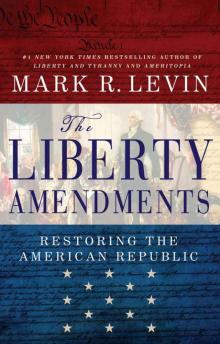 The Liberty Amendments: Restoring the American Republic
The Liberty Amendments: Restoring the American Republic Rediscovering Americanism: And the Tyranny of Progressivism
Rediscovering Americanism: And the Tyranny of Progressivism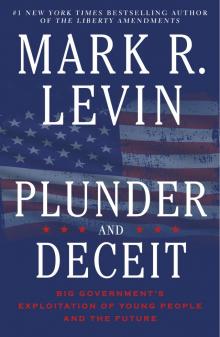 Plunder and Deceit: Big Government's Exploitation of Young People and the Future
Plunder and Deceit: Big Government's Exploitation of Young People and the Future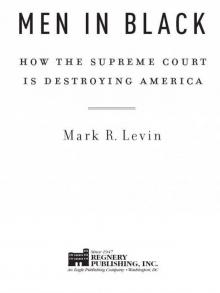 Men in Black: How Judges Are Destroying America
Men in Black: How Judges Are Destroying America Unfreedom of the Press
Unfreedom of the Press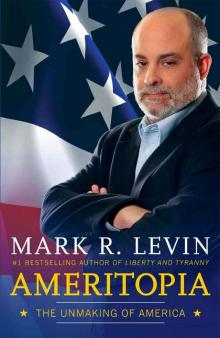 Ameritopia: The Unmaking of America
Ameritopia: The Unmaking of America Liberty and Tyranny
Liberty and Tyranny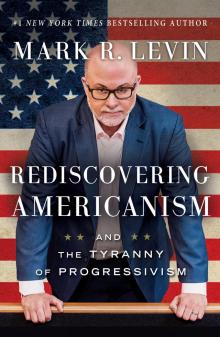 Rediscovering Americanism
Rediscovering Americanism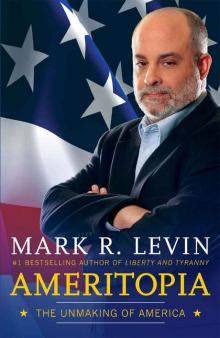 Ameritopia
Ameritopia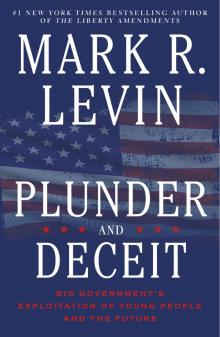 Plunder and Deceit
Plunder and Deceit